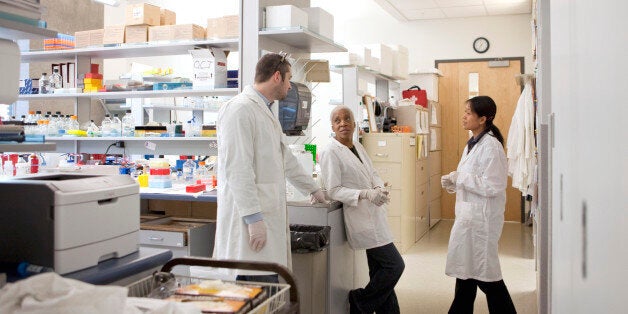
We, like many other scientists, had heard the stories, shared via email, on blogs, whispered in the corners of hotel conference rooms. Harrowing stories of sexual harassment and assault during one of the most important stages of professionalization in the sciences: fieldwork. Fieldwork is critical to learning the ropes and gathering the data that makes possible the expansion of knowledge in anthropology, archaeology, astronomy, biology, ecology, geology, oceanography, sociology, and many, many other fields of inquiry. We set out to explore more deeply the pervasiveness of these experiences and the results we published in PLOS ONE on July 16, 2014 are a sobering wake-up call.
Building on a preliminary study conducted in 2013 that was inspired by Kate Clancy's efforts in her Scientific American blog, we surveyed a total of 666 respondents, both men and women from 30 countries, and found that harassment and assault were common occurrences. Indeed, when asked to describe the frequency with which harassment or assault occurs at field sites, one study participant responded, "Constantly. That's field work." Nearly three-quarters of respondents were aware that harassment or assault had been committed at field sites where they worked. Even more disturbing, 64% of respondents reported they had personally been a target of sexual harassment; 22% indicated they had been sexually assaulted. Six percent of our male respondents reported being sexually assaulted, compared to 26% of the female respondents. The extent to which these percentages among respondents to our study represent the broader field sciences is unclear. But their numbers are unambigious -- hundreds reporting inappropriate comments and dozens reporting assault. And they are very similar to those reported among female medical residents, and women on college campuses.
We want to emphasize that both men and women in our study were targeted. However, women were three and a half times more likely than men to be targets. Further, the targets were overwhelmingly students and postdocs at the earliest stages of their academic careers. Women tended to be targeted by people senior to them in the professional hierarchy, for example, principal investigators and site directors. Men tended to be targeted by peers. Previous work by other researchers has shown that being targeted by one's superior in the workplace has a more severe impact on psychological well-being and job performance than when the perpetrator is a peer, suggesting that women may be doubly more burdened by the phenomenon of sexual aggression during fieldwork.
The suggestion that these are isolated incidents or rare occurrences perpetrated by one or two "bad apples" is not borne out by our data, or that from other disciplines. Instead, this is a pervasive phenomenon affecting many researchers, especially those with the most to lose and the least recourse. Many people in the sciences and the general public alike will be surprised that these kinds of abuses are still so common, thinking it was all in the past. Sadly, that's not the case. And despite outnumbering men in many PhD programs, women are still getting the message that they are not welcome as full members in academic society, from not being invited to speak at conference symposia to not being awarded major prizes from professional societies, in numbers that don't reflect the demographic reality, even in female-rich disciplines.
Despite the large number of people in our study who had been harassed and assaulted in the field, very few people in our study reported these incidences, in large part because they knew of no way to do so in the context of the field site, removed as it is from campus or HR departments. The fact that the perpetrators were, by and large, senior scholars and thus the logical person to whom one would report, could also be a complicating factor. Of those who did report, very few found the outcome to be satisfactory. Our findings suggest that clarifying and enforcing codes of conduct, and establishing actionable mechanisms for reporting sexual harassment and assault could go a long way to moving the needle.
Our main findings -- that women trainees were disproportionately targeted for abuse, and that targets generally felt they had few avenues to report or resolve these problems -- suggest that at least some science field sites are neither safe nor inclusive. We worry this is at least one mechanism driving women from science. We hope that these results will provide an opportunity for our professional communities to come together and generate solutions to improve the experiences of our trainees and colleagues. Indeed, the response on social media has been fast, furious, and enormously positive, with colleagues assigning the paper to their students, sharing it with their university administrators, and using it as a foundation on which to craft policies and clear reporting chains for their own field sites. This is a conversation we need to have, and the time is now.
Co-authors:
Kate Clancy, University of Illinois at Urbana-Champaign
Robin Nelson, Skidmore College
Julienne Rutherford, University of Illinois at Chicago
Katie Hinde, Harvard University